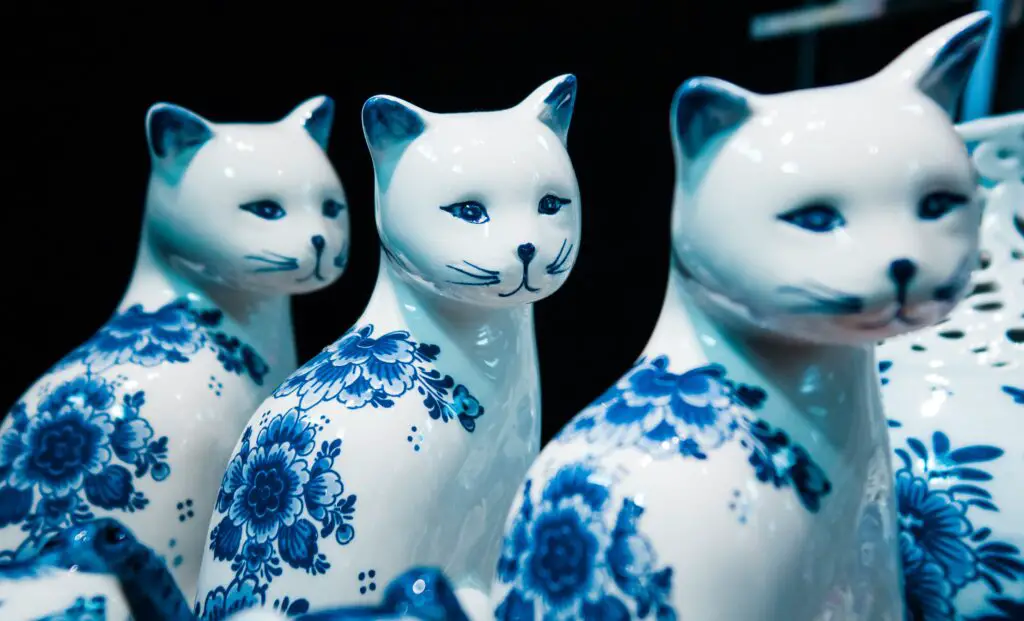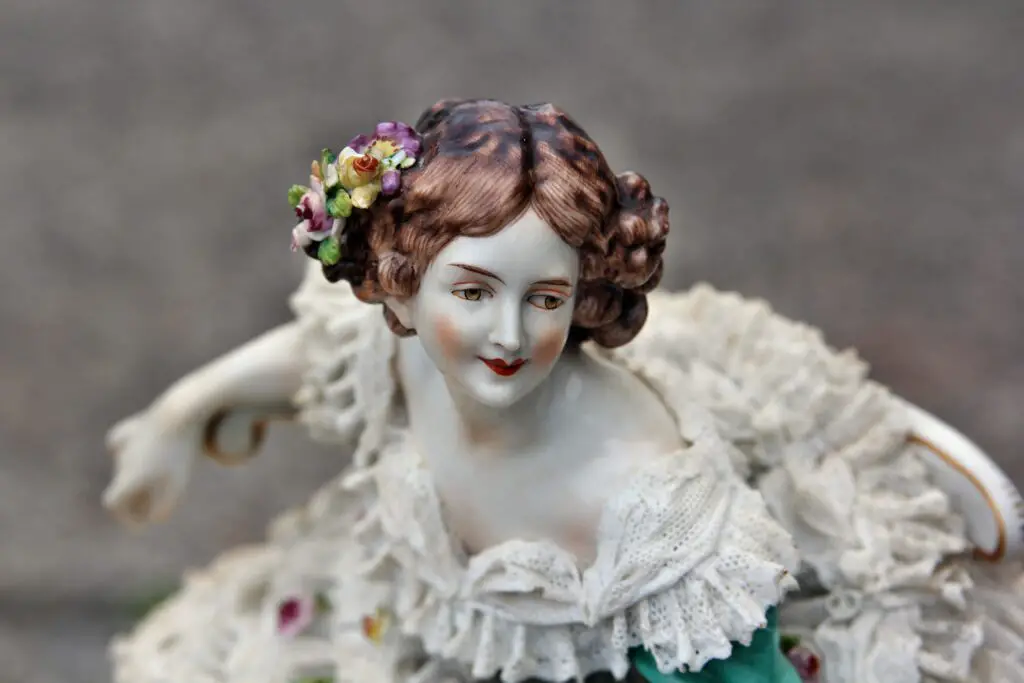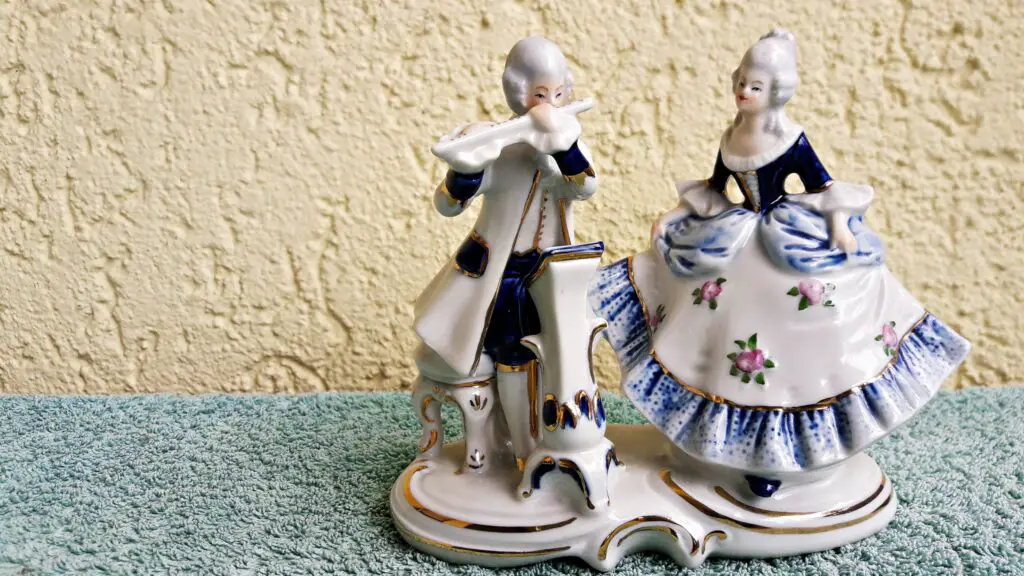As an Amazon Associate we earn from qualifying purchases.
Porcelain figurines are a part of one’s favorite antiques in their home. The bright white color of the figurine is what porcelain products are famous for. But with time, these artifacts can develop a thick coat of dirt over them and it becomes imperative to know how to clean porcelain figurines.
Not only that, the topcoat starts getting flaky, and hence, cleaning it becomes a challenge. This manual shares a step-by-step process on how to clean porcelain figurines with delicacy.
Contents
How to Clean Porcelain Figurines?
Getting dust of porcelain antiques can be a tricky task as time passes. The figurines made of porcelain are fragile and can be broken if not handled with care.
You need to be careful when you are trying to do this while cleaning a room full of junk. Moreover, the stains are pretty tough to remove, especially when they get old.
Materials Required
- Duster
- Q-tips
- Microfiber cloth
- Rubbing alcohol
- Synthetic vinegar
- Liquid soap
- Baby shampoo
- Dish wash soap
- Hydrogen Peroxide

Step #1: Dust off the Figurine
The first step towards cleaning the porcelain figurine is to get rid of the dust coat from it. To achieve a fresh non-dust artifact, use a soft duster or use a paintbrush with soft bristles, similar to what you may use to clean n64 cartridges. Once the dust is removed from most of the surface, it’s time to clean the hard corners and edges.
To clean hard edges and corners:
- Use Q-tips in place of a cloth duster.
- Just jab the earbuds gently on the areas and wipe them off.
- Don’t apply too much pressure while cleaning.
Step #2: Make Your DIY Cleaning Concoction
After removing the household dust from the figurine, it’s time for deep cleaning. Next, you can pick up one of the DIY ideas to refurbish your porcelain figurine at home given below.
Method #1: Use Isopropyl Alcohol
Isopropyl alcohol, also available as rubbing alcohol, is a non-toxic chemical agent that can be used to clean various materials such as a 3D printer, printer drums and can even clean an artifact. To clean your artifact using rubbing alcohol,
- Dab a sponge with some rubbing alcohol liquid.
- Use gentle pressure while wiping the edges.
- Lastly, wipe the figurine using a wet microfiber towel.
Tip
Isopropyl alcohol evaporates quickly. Therefore, you have to rub your figurine fast to avoid extra usage of the cleaning agent.
Method #2: Use Water and Vinegar
A fundamental way to clean your porcelain figurine is to use synthetic vinegar along with normal water. To clean your porcelain figurine using vinegar:
- Mix tap water and synthetic vinegar in a 2:1 ratio.
- Fill this mixture in a spray bottle.
- Spray the solution over the artifact and let it sit for 15-20 minutes.
- Use a wet microfiber towel to remove dirt marks.
- Wipe the artifact with a clean cloth.
- Repeat the process twice to see better results.

Method #3: Use Water and Liquid Soap
Another way to clean the porcelain figurine is to use liquid soap or body wash along with water. All you need to do is:
- Mix normal water and liquid soap in a 3:1 ratio.
- Fill this solution in an atomizer.
- Spray the solution over the artifact and let it sit for 5-10 minutes.
- Use a wet microfiber cloth to get rid of sticky marks.
- Wipe the artifact using tap water.
- Repeat the process thrice for better results.
Method #4: Use Water and Hydrogen Peroxide
To get rid of pale stains from the porcelain figurines, use a few hydrogen peroxides and see the magic. Hydrogen peroxide has similar properties to bleach, which is sometimes used for coins, but doesn’t stain off color from the figure. To clean your figurine using H2O2:
- Mix normal water and four teaspoons of hydrogen peroxide.
- Fill this concoction in a spray bottle and shake it well.
- Spray the solution over the figurine and let it sit for few minutes.
- Then, use a sponge scrubber or a scotch brite to remove tough, pale stains.
- Repeat the process 2-3 times for better results.
Method #5: Use Dishwashing Liquid
Dishwashing liquid can help in removing stickiness from the figurine. To clean dishwashing liquid to clean your porcelain figurine, do as follows:
- Mix tap water and dishwashing liquid in a 2:1 ratio and stir it well.
- Fill this solution in an atomizer.
- Spray the solution over the artifact and let it sit for 15-20 minutes
- Use a wet microfiber cloth to remove sticky stains.
- Wipe the artifact with a damp cloth.
- Repeat the process three times.
Method #6: Use Water With Baby Shampoo
The last alternative on this list is baby shampoo. Baby shampoo is a mild cleanser and won’t add to flakiness, unlike regular shampoo, which are actually also great for cleaning fish tank gravel.
To use baby shampoo to clean your figurine:
- Take 2 cups of water and add ½ cup of baby shampoo to it.
- Fill this mixture in an atomizer.
- Shake the bottle well.
- Spray the solution over the artifact and let it sit for 17-20 minutes.
- Use a wet microfiber cloth to remove stains.
- Wipe the artifact with clean water.
- Repeat the process two times.
Step #3: Dry the Figurine
Drying the figurine is essential, especially when it is prone to flakiness. Dab a dry microfiber cloth all over the figurine and let it dry under the fan at room temperature.
Here is a detailed guide that teaches how to get rid of the scratches on figurines.

Things You Should Not Do While Cleaning the Figurine
- Don’t use bleach to clean the porcelain figurines. Avoid using chlorine bleaches at any cost when the porcelain figurine has metal parts.
It is because metal and chlorine products aren’t good friends. Thus, the reaction can take place and damage the antique. - Avoid using hot to warm water as it leads to cracks and increases flakiness.
- Don’t dip the figurine in the water while cleaning.
Conclusion
In an experiment, scientists observed that old porcelain figurines and artifacts are prone to damage during the exhibition. The reason behind this theory is the change in the surrounding of the figurine. As time passes, the old figurines develop a coat of calcium carbonate that is a water-soluble salt.
The salt penetrates weak areas or cracks of the artifact when the temperature falls or rises around it. Thus, the porcelain artifacts get flakier and hard to recover.
So, if you also have an ancient artifact/figurine made of porcelain, make sure you place it at room temperature as a slight change in temperature may damage rare antiques, such as mirrors, that kept you deeply.
